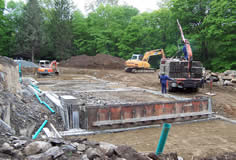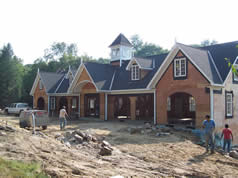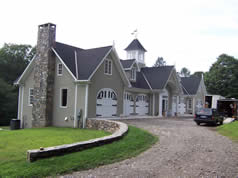As you prepare to repair, update or remodel your home, it is useful to review your long-range plans, evaluate what you already have, and clarify what you want to achieve with the improvement.
 Francis Ching / Dale Miller Francis Ching / Dale Miller
|
|
 |
 |
 |
 |
THE DESIGN PROCESS |
When you design a product for mass production—something like a tea cup, a vacuum cleaner, or an automobile, you spend a good deal of time in the planning and testing phase. You then produce a prototype or mock-up of the object, which you subjected to further abuse and testing. Finally you make the final product. Tried, tested and ready to meet the demands of the real world.
In building design, by contrast, you get only one shot at the task—each design is unique. The planning phase is usually relatively short. You design the project to the best of your ability on paper, build that ‘idea,’ (or something close to it) laboriously construct the prototype…. and then move in to it!
It is axiomatic that the more time and effort spent on the planning phase of a project, the less time will be spent picking your way through myriad details while the contractor and his crew stand around with their tool belts on waiting for a decision.
This does not mean that there will not be moments of on-site revision, changes in direction, or inspiration. But the presence of a well-thought out plan is like a good road map: it doesn't preclude you from making the wrong turn, but it does dramatically limit the possibility of getting lost.
Sasqua Design, LLC encourages the client/homeowner to take an active role in the design process. In the past, for example, clients have provided the measurements for the existing condition drawings, we provide a guideline to help in that process. One way we make available to shortcut the concept-drawing phase by having the owners participate in the actual conceptual drawing or sketching session.
Another somewhat unorthodox approach we frequently employ is to secure budget bid numbers from prospective contractors at an early stage in the drawing process. This practice allows the owners to get to know the prospective contractors as well as understand where the projected project stands in reference to the budget—al this before committing to full blown drawings. We provide a cover letter to the contractors that explains this process and increases the meaningfulness of the responses.
Designing one’s home can and should be a creative and, on the whole, enjoyable process. By following these and other practices developed over the last two decades, Sasqua Design helps to make that goal the reality.
LINKS TO VARIOUS STANDARD DOCUMENTS
|
|





